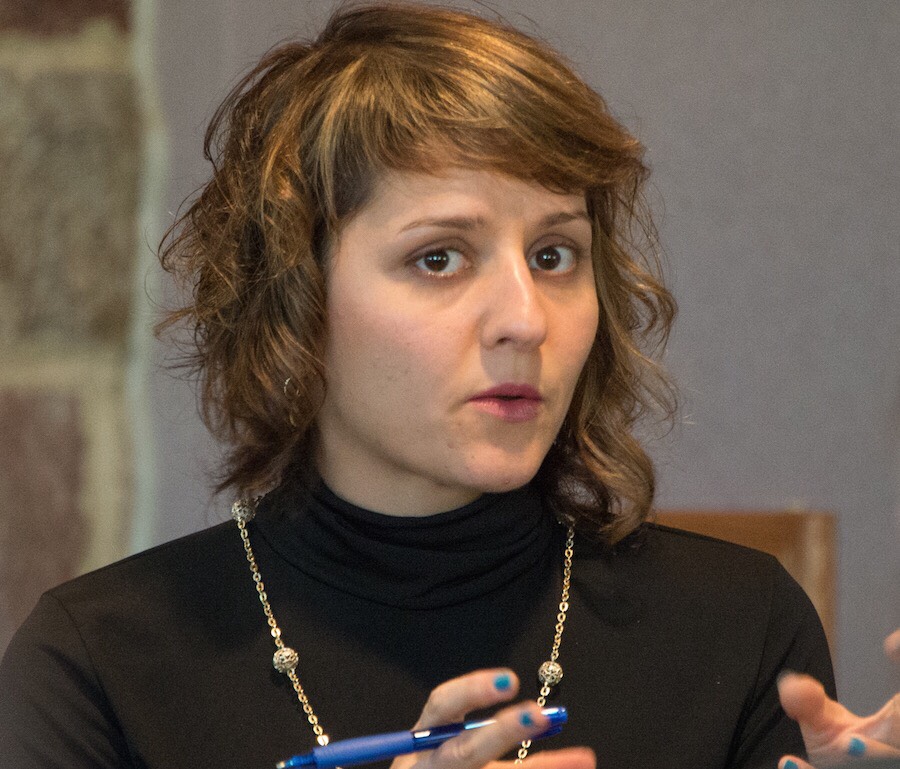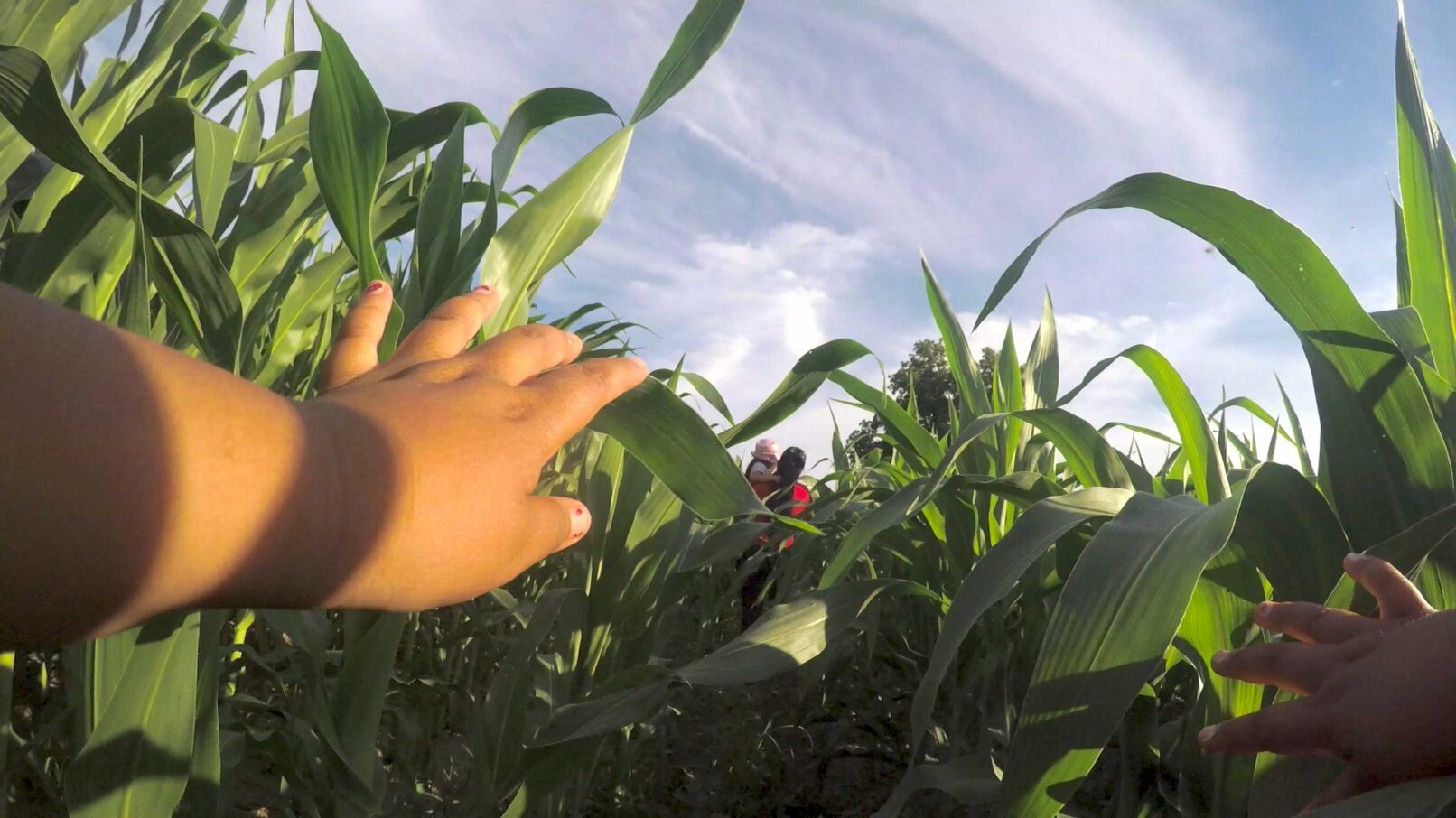How to Tell a True Immigrant Story
How to tell a True Immigrant Story is a 360 film created with community members of Saratoga Spring, a small city where a race track serves as recreation, employment, and a site of racial stratification. In 2018 Aggie Ebrahimi Bazaz received a grant to initiate a collaborative 360 project. The co-creation challenge was how to employ a “hypervisual method” at a time when visibility for immigrants was especially dangerous. Aggie’s and her collaborator’s experimental approach to spherical filmmaking challenged facile claims of 360/VR as an “empathy machine.” By revealing the “seams”of VR stitching and by employing what she calls a “multivocal chorus performance” she decenters and recenters power in the spherical realm. Rather than stay fixed onto any one position, the user is invited to move between subjectivities in an interrogation room or on a street corner.
The interrogation room challenges viewers to consider the role of questioning as a performance of power. In documentary films questions such as “who are you?” and “why are you here?” can reinforce power dynamics and mirror the processes that play out in any power scenario including an immigration interrogation.
IN CONVERSATION
January 27th, 2021
@ 11am-12pm
Aggie describes the social and racial dynamics of Saratoga Springs where she has worked on two co-creative projects in 2016 and 2018 respectively. She speaks to the power of art to disrupt naturalized power relations that are inscribed in museums, horse tracks and social spaces. Aggie addresses the challenges of working with a visual hyperreal medium in a time in which visibility was dangerous for many immigrants in the United States. She discusses the challenge of ensuring that the film was subverting rather than re-inscribing power dynamics. For example, Aggie suggests that like an immigration interview, questions posed in a documentary such as “How did you get here,” can reinforce power imbalances. To subvert these power dynamics, there is a scene in an interrogation room where questions posed by the interrogator become questions asked to the interrogator.

Aggie Ebrahimi Bazaz is an award-winning, Iranian-American documentary artist, writer, and educator. Her community-engaged creative practices focus on diasporic identities, belonging, Freirean praxis, and what Ford Foundation program officer Chi-hui Yang calls “documentary power.” Her work includes VR/360° documentary experiences, live participatory performances, installations, multi-platform collaborations—any form conducive to contributing nuance to ongoing dialogues around equity and social justice. Bazaz’s films have been shown internationally at film festivals, including Slamdance, Encounters Film Festival, CAAMFest, Atlanta Film Festival, Indie Grits Film Festival, and her recent film, “How to Tell a True Immigrant Story” (2019) was the first-ever VR film to be programmed in the Pardi di Domani shorts competition at the Locarno International Film Festival. Among other honors, she has received support from the Wexner Center, MDOCS Summer Storytellers’ Institute, Interlochen Arts Academy, Cal Humanities, the Center for Asian American Media and the Bay Area Video Coalition. She earned her M.A. in multicultural literature from the University of Georgia and her M.F.A. in filmmaking as a University Fellow at Temple University. Aggie is Assistant Professor of filmmaking at Georgia State University. She is at work on a long-term project embedded within a community of migratory farmworkng families who live and work in California’s Central Valley, as well as a multimedia project about family homes built around the world through remittances, Mi Casa My Home.
